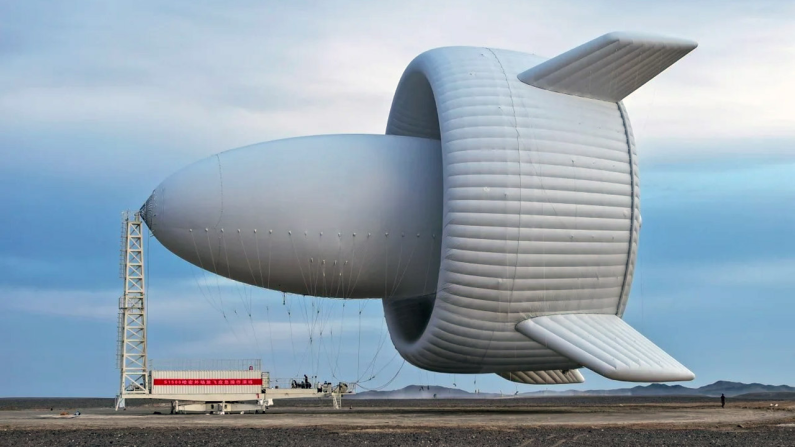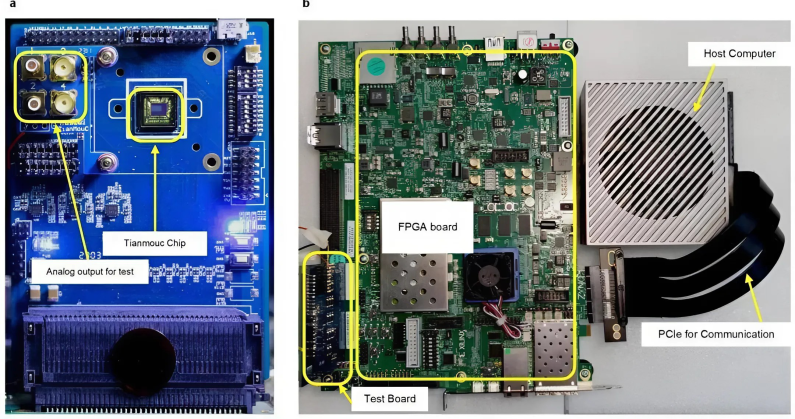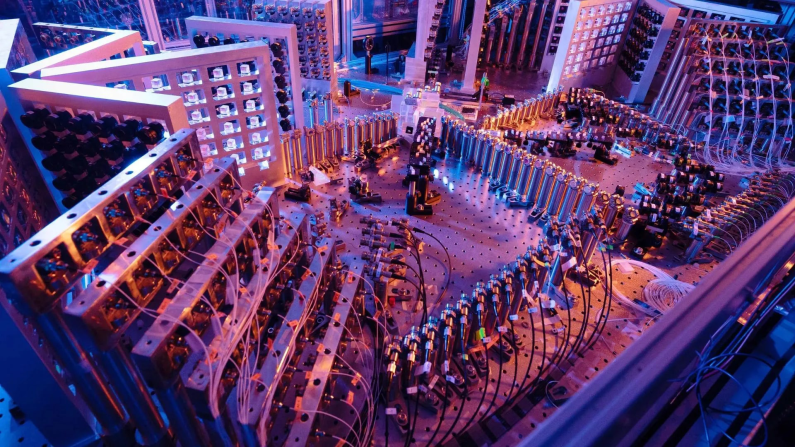The Chinese IT market and the country’s high-tech industry are steadily in the spotlight of the global community. The dynamically developing digital economy, which is projected to exceed $7 trillion by 2025, confirms China’s status as one of the main technological locomotives on the planet.
At the same time, the number of internet users has already reached 1.1 billion. Such a gigantic market, demonstrating phenomenal growth rates that outpace many developed countries, attracts both foreign investors and international companies seeking to establish their niche. According to the Ministry of Commerce of the PRC, in the first half of 2025, foreign investment in high-tech industries increased by an impressive 23.8% compared to the previous year. These figures are not just impressive; they demonstrate China’s unprecedented commitment to innovation and its ability to create unique markets and technologies that are often incomprehensible to others.
The Chinese IT industry is not just a follower of Western models but a distinctive phenomenon that shapes its own rules of the game. From unusual approaches to work, such as the famous “996” schedule, to emerging trends in entertainment, such as otome games, this industry constantly surprises. Understanding these features becomes critical for anyone who wants to scale their business in China, look for a job there, or simply be interested in how this eastern superpower functions from the inside. In this article, we will look at five key Chinese technological achievements that are projected to have a colossal impact on the global market in the next two years, from 2025 to 2026. We are sure that something will definitely surprise you!
1. Flying Wind Turbine - The Energy of the Future

China continues to demonstrate leadership in the field of renewable energy, and one of the most exciting developments in recent times is the flying wind turbine. The S1500 project, developed by Chinese engineers, represents an innovative solution for generating energy from wind at high altitudes, where winds are more stable and stronger. The first successful flight of a prototype of this floating wind turbine, equipped with modern control and navigation systems, was a significant step forward.
The technical specifications and advantages of the airship turbine (as it is called) are as follows:
-
Operating principle: The turbine is a large airship equipped with wind generator blades. It is held at the desired altitude with helium and tethered to the ground with cables, which can also serve to transmit energy.
-
Operating height: Ability to operate at altitudes up to 500 meters and above, where wind speeds can reach 30-40% higher than standard wind turbines.
-
Mobility and installation: Can potentially be deployed in locations where construction of traditional wind power plants is difficult or impossible, such as remote areas or on the water.
-
Environmental friendliness: The use of renewable wind energy, reducing dependence on fossil fuels.
-
Profitability: In the long term, due to greater efficiency and reduced infrastructure costs compared to ground-based installations, it may become a more cost-effective solution.
The S1500 project is expected to move to the pilot commercial implementation stage in the next two years. Successful deployment of such turbines could revolutionize wind power, providing more stable and powerful energy production, which is especially important for countries striving for energy independence and reducing carbon emissions. Such developments can be a response to the global challenges of climate change.
2. NEO Neuroimplant – A Breakthrough in Brain-Computer Interfaces

In a world where brain-computer interface (BCI) technologies are actively developing, the Chinese NEO neuroimplant is positioning itself as a serious competitor, possibly surpassing the developments of giants such as Elon Musk’s Neuralink. This implant, already successfully tested on humans, promises to revolutionize both medicine and everyday life, opening up new horizons for human interaction with the digital world.
Thus, NEO is able to provide the following advantages:
-
Safety and minimal invasiveness: The developers focus on the safety of implantation and minimal injury to brain tissue. NEO uses thinner electrodes and advanced algorithms to reduce the risk of rejection and increase durability.
-
High bandwidth: The implant provides an unprecedented data transfer rate between the brain and external devices, opening up opportunities for direct transmission of thoughts, commands, and even emotions.
-
Application in medicine: NEO has enormous potential in the treatment of neurological diseases, paralysis, and restoration of functions after traumatic brain injuries. It may allow paralyzed people to control prostheses, computers, and other devices with the power of thought.
-
Expanding cognitive abilities: In the future, such implants may be used not only to restore lost functions but also to expand human cognitive abilities, allowing access to information or control complex systems directly through thought.
NEO is scheduled to undergo new clinical trials in the near future and may receive initial approvals for medical use on a limited scale. If the trials are successful, this will be a huge step forward in the field of neurotechnology, opening doors for new therapeutic approaches and, ultimately, for deeper integration of man and machine.
3. Tianmouc Vision Chip – Now AI Will Have Eyes!

The Chinese Tianmouc vision chip, developed by Youtu Tech, represents a revolutionary step in the development of artificial vision for artificial intelligence. This chip is capable of processing visual information with incredible speed and accuracy, mimicking the capabilities of the human eye and brain. It promises to take machine vision systems to a completely new level, opening up opportunities for more advanced robotics, autonomous systems, and intelligent video surveillance.
Specifically, the technological innovations of the vision chip consist of the following:
-
Unmatched processing speed: Tianmouc is the fastest vision chip in the world, providing image and video processing with unprecedented speed, which is critical for real-time systems.
-
Human-like perception: The chip is capable not only of recognizing objects but also of understanding context, analyzing scenes, and even predicting actions, much like the human brain does. This is achieved through the use of advanced deep learning algorithms.
-
Energy efficiency: Despite its high performance, the chip has low power consumption, making it ideal for use in mobile devices, drones, and robots.
-
Breadth of application: The application possibilities of Tianmouc are enormous: from improving road safety and street video surveillance to improving navigation of autonomous vehicles, robotics, and augmented reality systems.
It is likely that in the next two years, Tianmouc will find wide application in various industries, from security to the automotive industry. Increasing the availability and performance of this chip could lead to a significant leap in the development of artificial intelligence systems, making them more “intelligent” and capable of more complex interactions with the real world.
4. Jiuzhang 3.0 Quantum Computer - A Revolution in Computation

Chinese science and technology have achieved another significant breakthrough with the development of the Jiuzhang 3.0 quantum computer. This device, based on the principles of quantum mechanics, demonstrates computing power millions of times greater than the capabilities of the most powerful modern supercomputers. Jiuzhang 3.0 is capable of solving problems that were previously considered impossible, opening up new horizons in cryptography, materials science, pharmaceuticals, and fundamental scientific research.
The list of Jiuzhang 3.0 achievements includes:
-
Quantum supremacy: Jiuzhang 3.0 successfully demonstrated “quantum supremacy” by solving a complex task of random sampling of photons in a matter of minutes, while it would take the most powerful classical supercomputer billions of years to solve the same task.
-
Photonic platform: Unlike some other quantum computers that use superconducting qubits, Jiuzhang 3.0 is based on a photonic platform, which provides greater stability and scalability.
-
Application in cryptography: The ability to hack modern encryption methods, which makes it necessary to develop post-quantum cryptography.
-
Application in scientific research and the chance to significantly accelerate their growth: Discovery of new opportunities for modeling complex molecules, developing new drugs and materials, as well as for solving fundamental problems in the field of physics and cosmology.
Undoubtedly, Jiuzhang 3.0 and similar developments will continue to transform scientific research and develop new applications, especially in the field of cybersecurity and the discovery of new materials. This device could become a catalyst for a range of breakthrough discoveries in various fields of science and technology.
5. Intelligent Masks with Biosensors - A New Word in Healthcare

In the context of increased attention to health and safety, China is actively developing technologies for “smart” masks equipped with integrated biosensors. These masks not only protect against viruses and pollutants but are also able to track various health indicators of the user in real time, such as body temperature, blood oxygen levels, and, in the future, other biomarkers.
Thus, such masks make it possible to produce:
-
Health monitoring: Integrated biosensors allow real-time collection of data on the physiological state of the user, which can be useful for early diagnosis of diseases and monitoring of chronic conditions.
-
Maintaining connections with AI: The collected data can be transferred for analysis to artificial intelligence systems, which are able to detect anomalies and warn the user or medical personnel.
-
Improved safety compared to classical methods: In addition to the protective function, such masks are developed taking into account comfort and long-term wear, using breathable and hypoallergenic materials.
-
Breadth of application: Potential applications include not only medical institutions but also mass use in everyday life, in production, in sports, as well as in access control and security systems.
Given the ongoing global concern about health care issues, intelligent masks with biosensors are highly likely to become a mass product. They could revolutionize preventive medicine and remote health monitoring systems, making self-care more accessible and effective.
In a word, China is confidently moving towards technological dominance, offering the world not just copies of existing solutions but truly innovative products capable of changing the global landscape. From flying wind turbines promising clean energy of the future to neuroimplants erasing the boundaries between man and machine and vision chips giving AI “eyes,” Chinese developments demonstrate ambition and incredible potential. In the next two years, we will likely witness these and many other Chinese technologies begin to have a tangible impact on our daily lives, work, and perception of the future. China is not just keeping up with the times; it is ahead of them, shaping a new era of technological progress.
Share this with your friends!






Be the first to comment
Please log in to comment